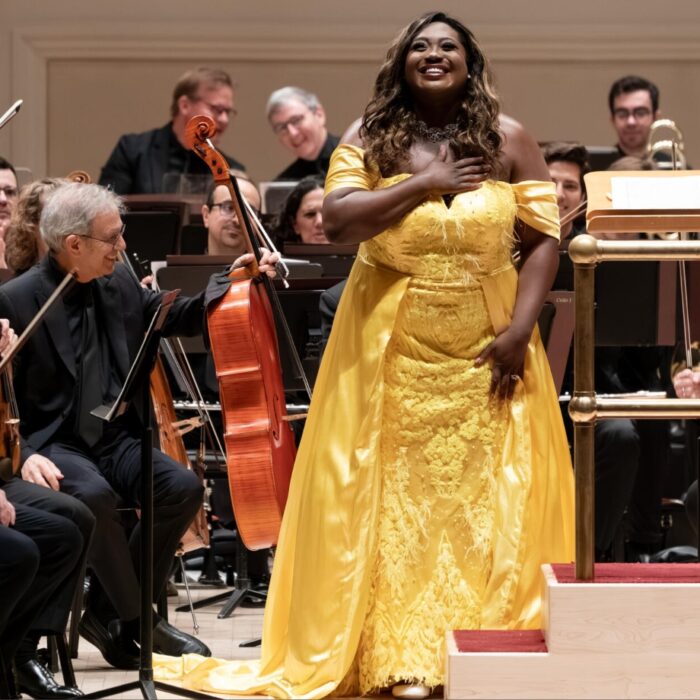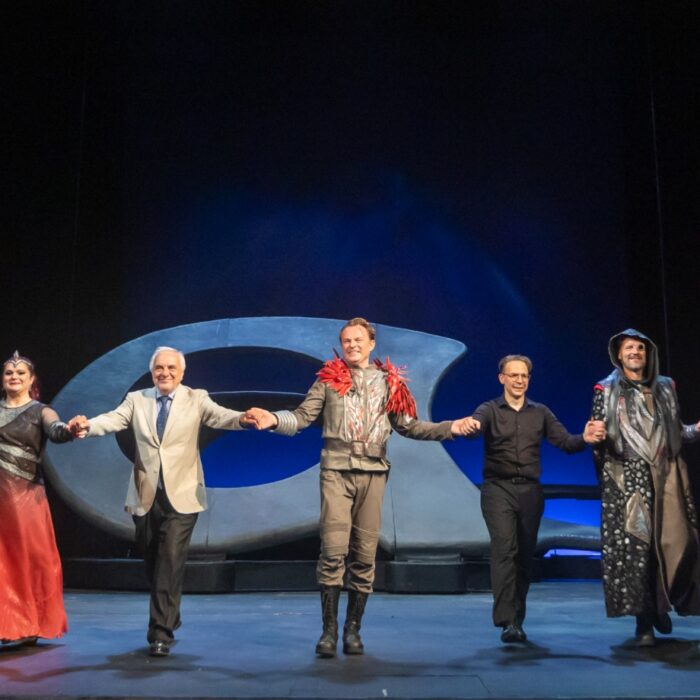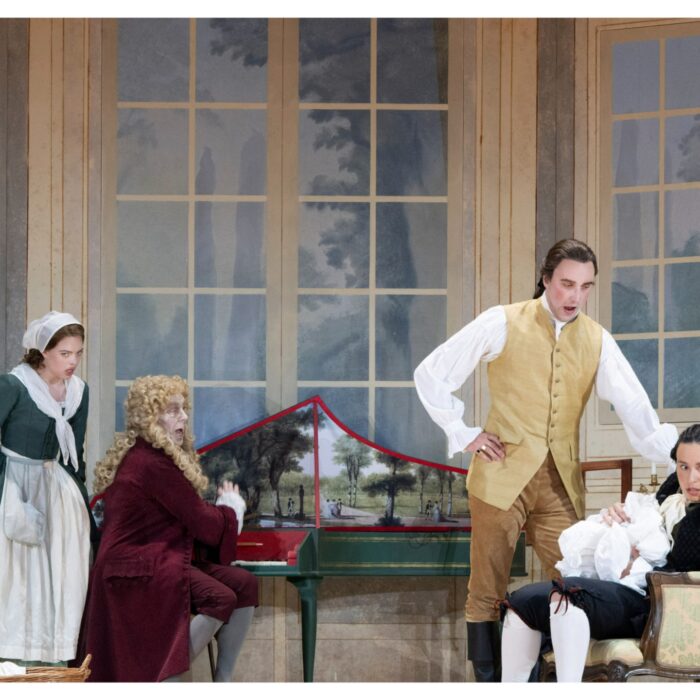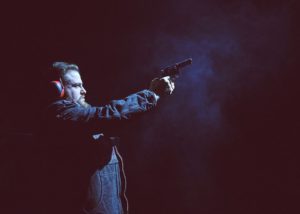
Heartbeat Opera 2019-20 Review: Der Freischütz
A Complex & Chilling Re-Imagining of Weber’s Iconic Work In the Context of Trump’s America
By Joseph M. Ortiz(Source: Heartbeat Opera Facebook)
In the canon of German Romantic opera, Weber’s “Der Freischütz” is about as conventional as they come. The opera, which is loosely based on a traditional German folktale, features hardy woodsmen, drinking songs, enchanted bullets, demonic incantations, a melancholic male hero, a pure virtuous maiden, and a mysterious hermit.
Thus, it was ripe for the kind of “radical adaptation” that Heartbeat Opera proudly claims as the company’s ethos.
Generally speaking, “Der Freischütz” can best be described as a Faustian morality tale of the battle between good and evil. In this particular production, however, the opera was boldly re-envisioned as a scathing critique of the “costs of toxic masculinity and gun culture” that are often associated with Trump’s America.
This is certainly a stretch. Weber, who openly called for the establishment of a German national music tradition and whose father had baronial aspirations, was no liberal champion. For him, chauvinism in “Der Freischütz” is a premise, not a problem to be solved. Nonetheless, the focused and unflinching approach of Heartbeat Opera’s directors, along with the spirited performances by its singers and musicians, made the production a convincing one.
Next Context for Classic Story
Even before the performance began, it was clear that this would not be a boiler-plate “Freischütz.” The stage was occupied by a large rocky edifice on one end, and on the other by a crude, divey bar trimmed with Americana bunting and streamers.
Sara Brown’s set design made efficient use of the Rose Nagelberg Theater, which has the audience sitting around and above the stage.
The performance space was shared by the orchestra, which was situated in the middle of the theater at stage level, and thus equally visible to the audience. This was a “reduced” orchestra of seven instrumentalists, including a keyboardist (Daniel Schlosberg) who doubled as the opera’s conductor. Schlosberg, who is part of Heartbeat Opera’s creative team, was also responsible for the arrangement of Weber’s orchestral score for this smaller ensemble. As the night went on, all of the instrumentalists revealed themselves to be virtuosic musicians in their own right, fully conveying the lushness of Weber’s prototypically symphonic score.
The critical bent of this production was deftly telegraphed in the first few minutes of the performance.
While an ominous drumbeat is playing, Max (Ian Koziara) appears on stage taking trial shots at a man-shaped vector target. Then, on a raised platform opposite the stage, Agathe (Summer Hansen) appears wearing a white wedding dress and bleeding profusely from an abdominal wound.
Another figure who closely resembles Max appears next to her, looking disconsolately at a gun in his own hand. The implication of this vignette—a connection between gun culture and tragic violence—would have been clear enough to rile any NRA lobbyist. More subtly, the vignette was also a clever nod to the original, darker folktale version of “Freischütz,” which ends with Max unintentionally shooting and killing Agathe. As opera historians have often pointed out, Weber was compelled to change this ending in order to appease the morally conservative Prussian censors.
The first scene of the opera creatively amplified the message of the initial vignette. In the German libretto by Johann Friedrich Kind, the opera’s action begins with a lively procession of marksmen and countryfolk who have just returned from a shooting contest. Heartbeat Opera rendered this as a rowdy celebration at a local dive bar somewhere in east Texas. The men were clad in denim and boots, while the women were conspicuous in kitschy, Oktoberfest-style barmaid uniforms—likely a tongue-in-cheek reference to the opera’s original German setting.
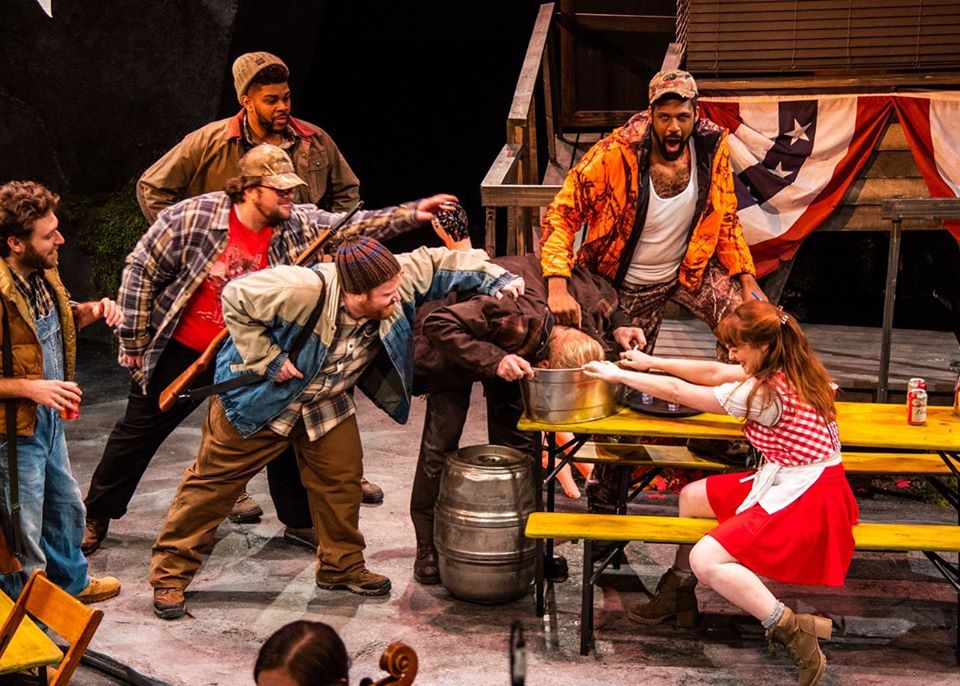
(Source: Heartbeat Opera Facebook)
Striking Celebrations & Reimaginings
Even more striking than the updated costumes was the nature of the celebration itself. The marksmen in “Der Freischütz” are always a rowdy bunch, but in this production they went full-on fratboy. Amid the rampant drinking and cigarette-smoking, the men’s attention intermittently turned to a life-size female blow-up doll, scantily clad in Daisy Dukes and a bikini top. Later, one of the men ripped off the bikini top, a gesture that seemed to suggest a rehearsal of sexual assault. And while the marksmen and townspeople mocked Max as always, this time their taunts escalated to acts of physical abuse. At one point, the marksmen dunk Max’s head in a basin of water, an act that hovered between fraternity hazing rituals and Guantanamo-style torture methods.
At the head of this raffish troupe was Kilian, here commandingly performed by Quentin Oliver Lee (who also doubled as Prince Ottokar in Act three). A tall, imposing figure with a deep, resonant voice, Lee was entirely convincing as the stereotypical alpha male—and Max’s nemesis.
In the opera, Kilian has just won the shooting contest, and he takes every opportunity to rub Max’s nose in the fact. During the celebration he bullishly flaunts a t-shirt inscribed with the phrase “THIS IS WHAT WINNERS LOOK LIKE” and, in the grand tradition of recent Super Bowl and Oscar winners, he commands his posse together for a group selfie. This Kilian was the perfect embodiment of—as Max finally says in an outburst of anger and frustration—an “asshole.”
Max’s outburst was the first spoken (as opposed to sung) word in the production, and it revealed one of the most thoroughgoing changes in the adaptation. While the sung passages were largely unchanged from the German libretto (a supratitle screen in the hall provided English translations for these), the spoken dialogue was liberally adapted from the German text and rendered into contemporary idiomatic English.
The purpose of this adaptation was twofold. First, the spoken passages helped to anchor the opera in its updated setting in east Texas. Second, seemingly minor changes to the language often underscored the production’s thematic concerns. For example, whereas Kind’s German libretto has Kaspar pressuring Max to drink a toast to the Prince lest he prove himself a “Judas,” Heartbeat’s Kaspar compels Max to drink “to this great nation” or else be branded a “traitor.” The jingoistic element here was not hard to miss.
Heartbeat’s Kaspar (Derrell Acon) was himself a beguiling creation. The production reimagined Kaspar, a ranger who has previously sold his soul to the devil Samiel, as an Iraq war veteran who clearly exhibits signs of PTSD.
Later, when Kaspar tries to persuade Max that he needs magic bullets, he explains that such bullets are the only reason that American military snipers had any success in the Middle East campaigns. Acon gave a very physical performance of the character, frequently bounding across the stage and gesturing wildly during moments of intense stress. This bodily kineticism helped to compensate for Acon’s inconsistent singing, which often seemed underpowered and was occasionally overwhelmed by the orchestra.
Koziara had the opposite problem. His singing was full-throated and resonant throughout, particularly in Max’s plaintive “Durch die Wälder” in Act one, but his interpretation of the character tended toward the introspective and cerebral. His constrained body movements communicated a brooding self-analysis of his situation rather than the experience of personal anguish.
The highlight of any “Freischütz” production is of course the Wolf’s Glen scene that closes Act two. Weber used the opportunity of a demonic incantation scene to craft a gradually intensifying passage of orchestral frenzy—think “Night on Bald Mountain” on steroids. Thus, I was curious (and a bit apprehensive) about how the seven-member ensemble would handle this orchestral showpiece. I needn’t have worried. The re-composition of the scene by Schlosberg and William Gardner made full use of the instrumentalists while judiciously using the resources of the electronic keyboards to replicate the percussive and brassy accents of Weber’s music.
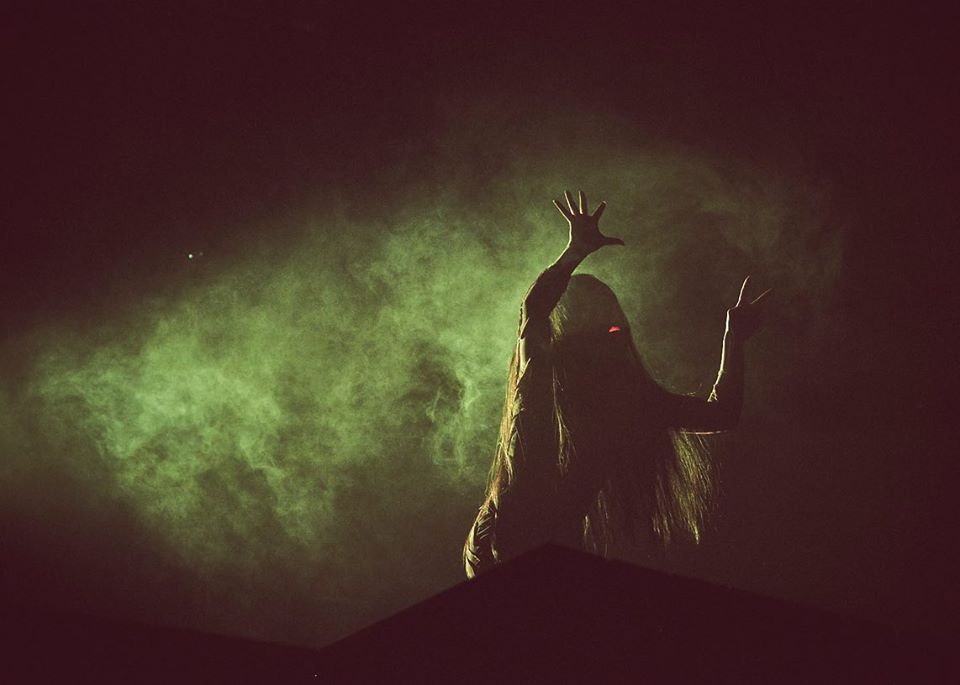
(Source: Heartbeat Opera Facebook)
Disturbing Reimaginations
The staging of the Wolf Glen scene was equally innovative, and more than a bit disturbing. Kaspar’s preparations for the ritual included the dismemberment of a small, unseen animal; the audible sound of bone-breaking evoked a visceral reaction in the audience.
Samiel (azumi O E) was a truly ghastly spectacle, sporting a shaggy mane of hair and drawing on conventions of Japanese Butoh dance (an avant-garde genre of theatrical dance that uses grotesque costumes and body movements to express social critique).
The impressive performance by azumi O E, a Butoh dancer herself, captured the inhuman nature of Samiel in a way that blurred the distinction between human and inhuman. Indeed, one of the masterstrokes of the production was the decision to have Samiel appear earlier in Act 2, in the scene between Agatha and Ännchen.
During this scene an unidentified woman silently tends to Agatha’s wedding dress in the background. Once Agatha and Ännchen leave, however, the “woman” turns to the audience and reveals a white, featureless face; her bodily movements reveal that she was Samiel all along. This was a brilliant way of bridging the opera’s domestic and forestal scenes, which many critics have felt to be at odds with each other. In a sense, the production suggested that the “toxic masculinity” of the forest is the dark side of romance, not its antithesis.
The climax of the Wolf Glen strategically capitalized on the innovations that preceded it. Instead of folktale monsters or Gothic demons, visions of the earlier celebration appeared in different corners of the stage. In one spot were a gaggle of taunting barmaids, while a waterboarding scene took place in another. And, in another corner, one of the marksmen appeared to be having sex with the blow-up doll. There was no mistaking the import of these “nightmarish” visions: the true threat to Max and his community is not some external evil, but the worst impulses of the community itself.
In comparison to the first two acts, Act three was fairly conventional. The scene featuring Agathe and Ännchen again felt like a respite from the social evils of the forestal scenes, in large part because the production chose not to ironize these two characters.
Hassan’s rendition of “Und ob die Wolke siever hülle” suggested sincere hopefulness, a feeling that was bolstered by her crystalline voice and fullness of phrasing.
Jana McIntyre’s Ännchen was one of the real delights of the production. Ännchen’s whimsical optimism is typically a foil to Agathe’s gloomy seriousness, and here the contrast was heightened by McIntyre’s vibrant tone, which occasionally broached a coloratura style of singing. In addition, her ability to project a shrewd wittiness suggested another aspect of her character not evident in most productions: far from being naïve, this Ännchen retreats into adolescent frivolity as a defense against her culture’s conservative values.
The last scene arguably constituted the most extreme, and most controversial, adaptation of Weber’s opera. In Kind’s libretto, a mysterious hermit saves Agathe and sagaciously persuades Prince Ottokar to pardon Max for his crimes. Proske re-envisioned this hermit as “Max’s Shadow” (Eric Delagrange), an original creation who looks like Max and who had appeared briefly in the opening vignette.
Instead of solemnly guiding the Prince and townspeople, he terrorizes them with an assault rifle. As screams were heard directly outside the theater, Max’s Shadow mercilessly grabbed the cowering actors and prodded them to center stage with his gun. Following this unexpected replica of a mass shooting, a single spotlight focused on Max’s Shadow, who is desperately clinging to his gun. The opera ended with this image while the chorus sang the final prayer: “Ja, laßt uns die Blicke erhebe / Und fest auf die Lenkung des Ewigen baun.”
If there has been a more caustic ironizing of the trope of “thoughts and prayers,” I don’t know what it is. A fair criticism of Heartbeat’s trailblazing production might be that its representation of American gun culture is too stereotyping or too simplistic. My own city of El Paso suffered a particularly terrible mass shooting earlier this year, and so I know all too well that the victims of gun violence are often precisely those who resist its culture.
Nonetheless, the bold approach taken by Heartbeat Opera affirms its promise to take risks in its staging of classical operas, and it makes a persuasive case for the contemporary relevance of Weber—and of opera more generally.
